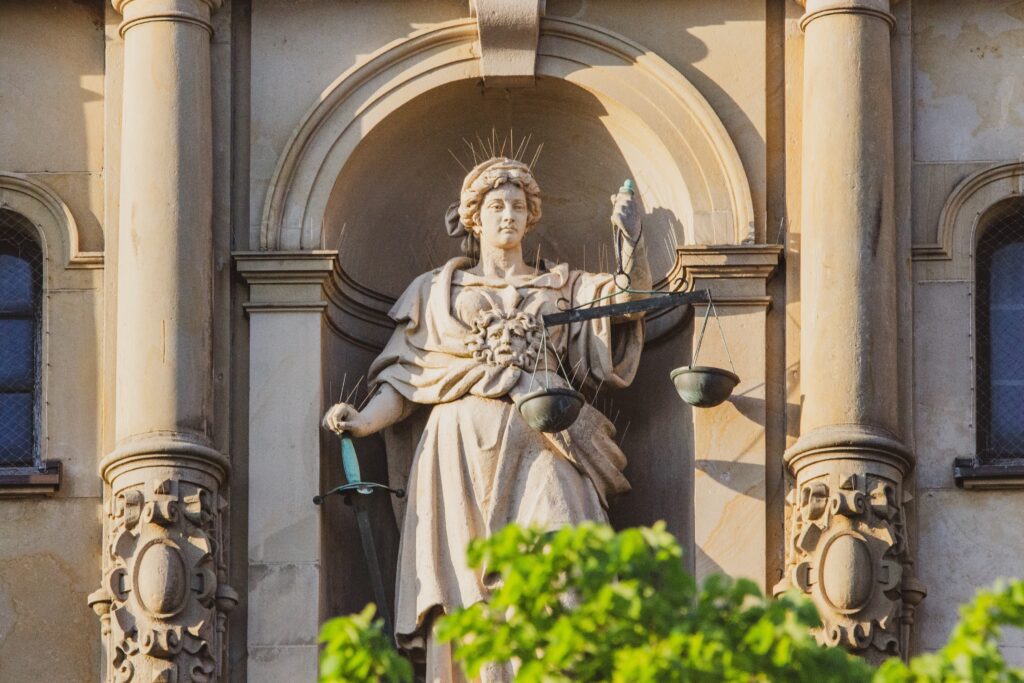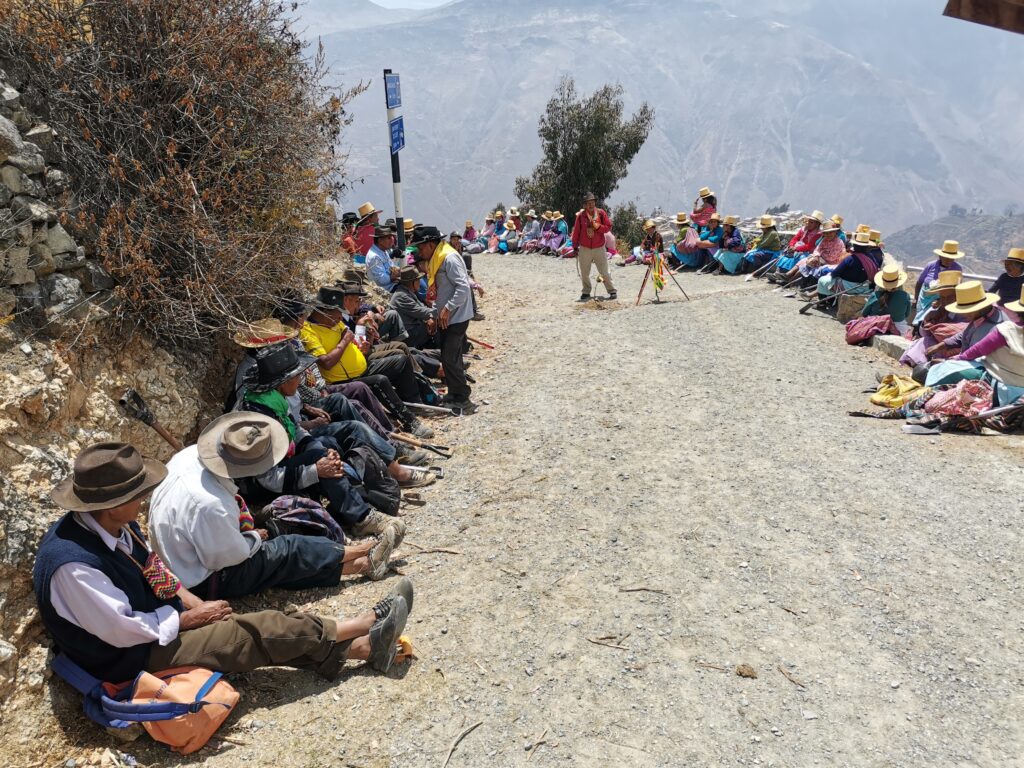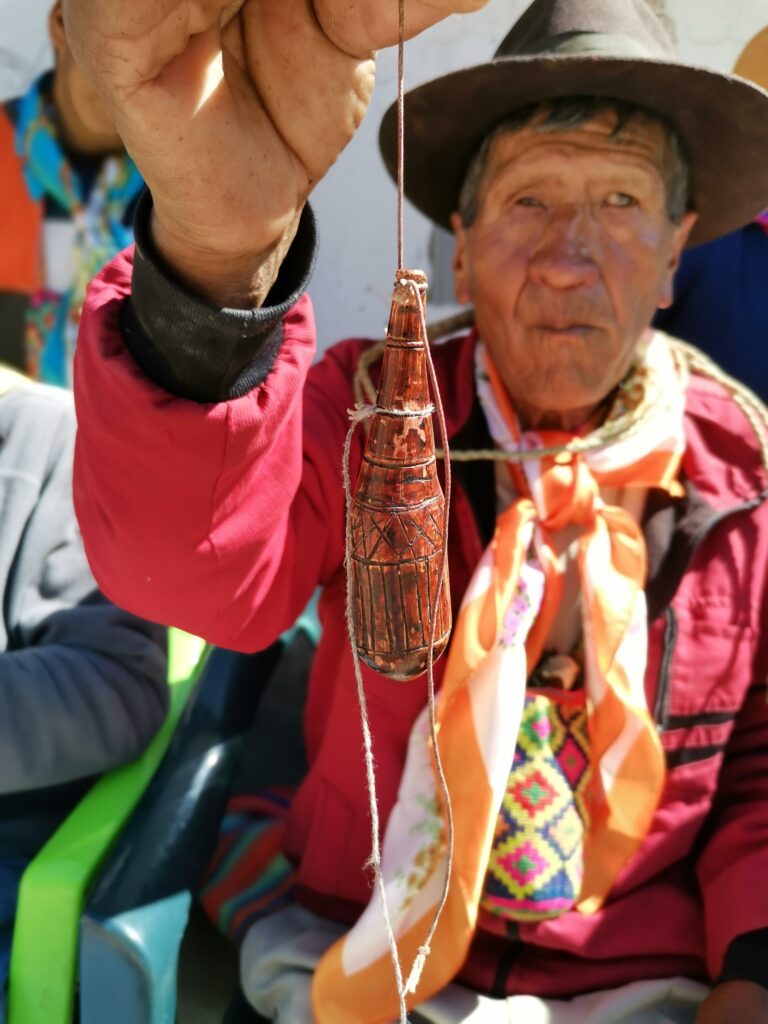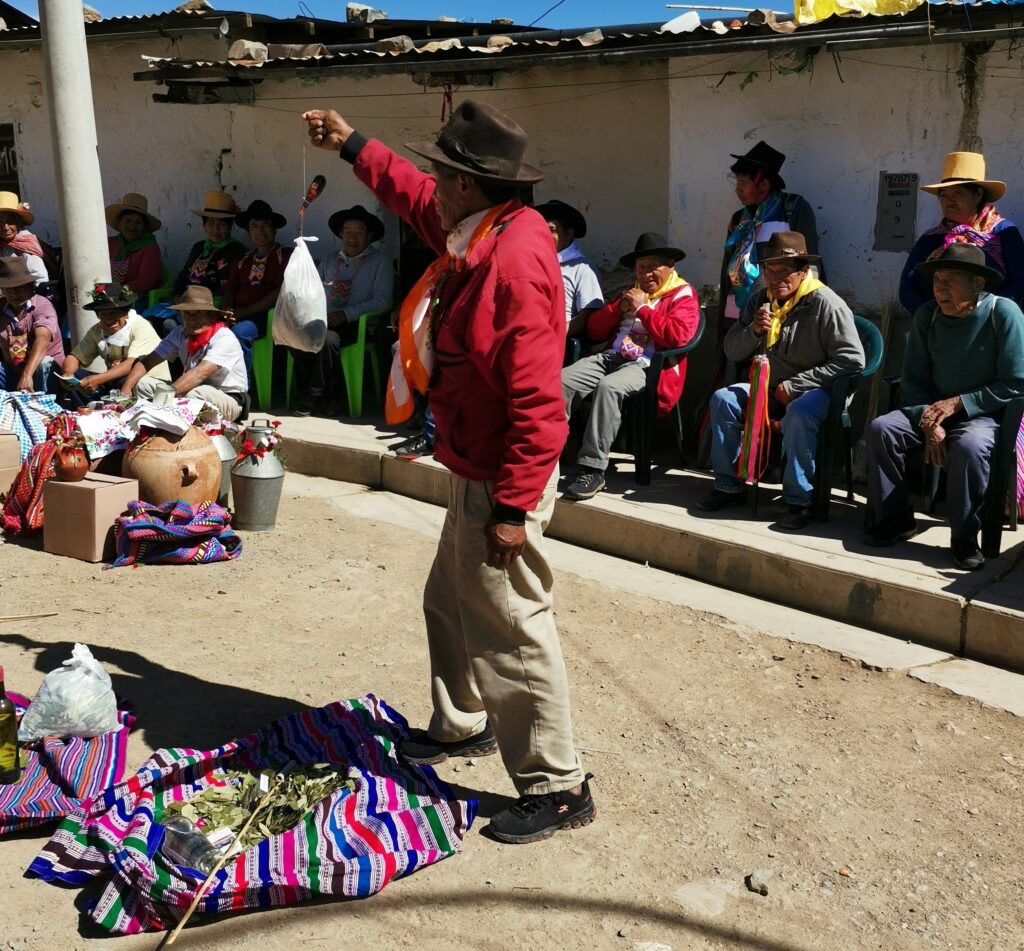Fair and Balanced—Weighing Coca With a Wipi in Peru
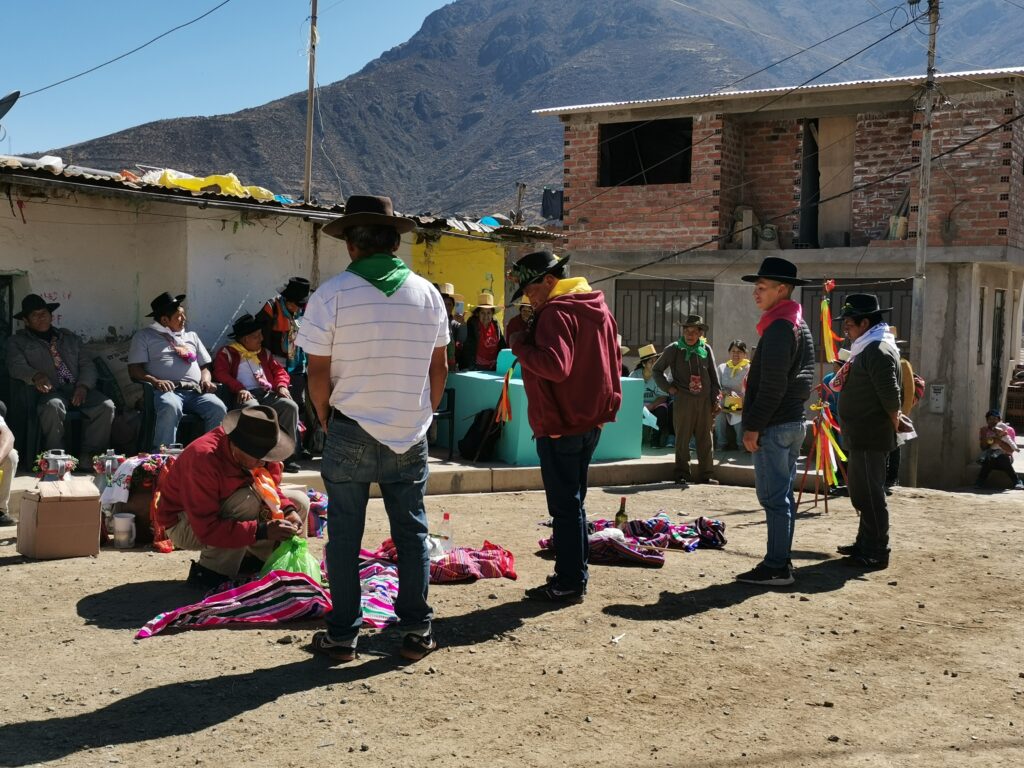
THE WIPI SCALE IN PERU
On a cool spring morning in 2022, the Andean community of San Pedro de Casta gathered in the ceremonial plaza to witness the weighing of the coca leaves. Nestled in the Andes Mountains, a three-hour drive from Peru’s capital of Lima, Casta is home to about 1,000 residents.
Four people with ritual authority queued in order of their status, waiting to hand a plastic bag of coca leaves to the principal. Responsible for running the ceremony smoothly, the principal knelt and began the fiddly task of tying each bag, one at a time, to the community scale known as a wipi. With a bag securely suspended, he raised the wipi to show the community for their approval.
The wipi in Casta, like scales around the world, reveals properties about items that are not apparent to the naked eye. But the way the wipi is used in Casta highlights how concepts of fairness are not universal. As anthropologists, we see the use and depiction of scales as a window into various societies’ perceptions of fairness and justice.
SCALE HISTORY
Ancient Egyptians and Mesopotamians likely began using scales in the third millennium B.C. The devices then spread to the Indus Valley, Near East, and Europe, whereas Indigenous peoples in South America independently invented scales. Then and now, scales have been used to assign value and certify that items meet certain standards. In Casta, items are weighed to demonstrate whether ritual authorities have fulfilled their commitment to the community.
Outside of their functional use, scales have become an important symbol of truth. In the hands of Classical goddesses of justice, Justitia in Rome and Themis in Greece, scales weighed the immaterial matters of fairness and truth. Associating scales with morality, ancient Egyptians depicted the heart of the dead as being weighed against a feather to determine whether an individual had lived a proper life.
Today statues at courthouses in many nations depict Lady Justice holding a scale to invoke the idea of impartiality and divine order in the judicial system. In these systems, judges are expected to arrive at the truth through weighing the evidence.
From a cursory glance, the wipi and Lady Justice’s scale clearly differ. The latter is an equal-arm balance that measures equivalency between two items. In contrast, the wipi is an unequal-arm balance, meaning that it has a bulky weighted end and, on the other side, a long slender arm with four notches.
On the wipi, lighter items are—traditionally—placed farther from the fulcrum than heavier things, with a horizontal wipi signaling the correct weight for the appropriate notch. In recent times, however, Casta residents have come to evaluate the degree of the wipi’s tilt as an acceptable measure.
COCA FOR CANAL CLEANING
The people of Casta rely on irrigation for agriculture and livestock farming. Every October, the community performs a week-long canal-cleaning ceremony known as the champería. It is the social highlight of the year: a time when friends and family members living outside of Casta return to the village and reunite with loved ones.
The champería is not all about work, but it is not all play either. Crews scale steep slopes to reach the canal banks and use spades to heave rocks, debris, and branches from the irrigation canals. Community members also dance, perform traditional water songs, and make offerings to the sacred ancestors believed to own and control water.
Large quantities of coca leaves, the plant used for a multitude of medicinal and ritual purposes, are needed for divining rainfall, nourishing the ancestors, and chewing during the event. The small, smooth-edged green leaves contain various alkaloids and have mild stimulant properties. The slightly bitter, sun-dried leaves can be brewed into a tea, or people can chew a few leaf blades. They press the freshly chewed wads against their inner cheek and apply lime powder with a tiny wooden applicator spoon called a shukanka.
Tradition stipulates that ahead of the first day of canal-cleaning, the ritual authorities must submit varying quantities of coca leaf, which will be distributed to the workers and elders. The elders help govern the ceremony and should be offered coca leaves regularly as a mark of respect. To ensure that there is enough coca, the two higher-ranking authorities must each submit one pound of coca, while the two lower-ranking ones must submit half a pound each (three pounds in total).
The coca is first weighed indoors at the local governor’s premises. But the coca submissions are not considered valid or legal until the entire community approves the offerings, weighed by the wipi scale, at the public ceremony. Once weighed, the coca leaves are distributed before the physically demanding labor of canal cleaning gets underway.
As anthropologists, we see the use and depiction of scales as a window into various societies’ perceptions of fairness and justice.
When chewed, the stimulant properties of the leaves, activated by the alkaline lime powder, help fend off fatigue during the long ascents up the canal intakes. In Casta, a shortage of coca leaf for this kind of communal work is considered a transgression against time-honored customary law. A mark of disrespect to one’s fellow community members. A punishable offense.
During the 2022 ceremony, all goods were weighed from the same wipi notch, and the angle of the beam served as an indicator of whether individuals had met their obligations. At this ceremony, no one voiced complaints about the coca submissions. Smiles of relief spread across each of the authorities’ faces in turn when the principal announced one by one that their coca submissions were approved.
WEIGHING FAIRNESS
Built to exhibit scalar relationships, the wipi fits local notions of fairness that tie a person’s responsibilities to their rank. This differs from the scale of Lady Justice, which serves as an aspirational symbol for a judicial process in which an impartial judge weighs evidence and individuals are treated equally under the law. At the canal-cleaning ceremony, younger, lower-status authorities submit smaller quantities of tribute goods, like coca, and higher-status authorities submit more.
The wipi represents these different obligations, and the elders and community certify whether the weight of the goods meets community standards. In Casta, order and fairness during the champería are grounded in a commitment to collective decision-making and keeping responsibility proportional to rank. Not everyone is expected to contribute the same amount at the same time, but the entire community is involved in certifying that contributions are fair and balanced.
For those interested in different legal systems and weighing practices worldwide, the use of the wipi in Casta serves as a reminder that fairness and justice are defined, practiced, and performed differently across cultures.































